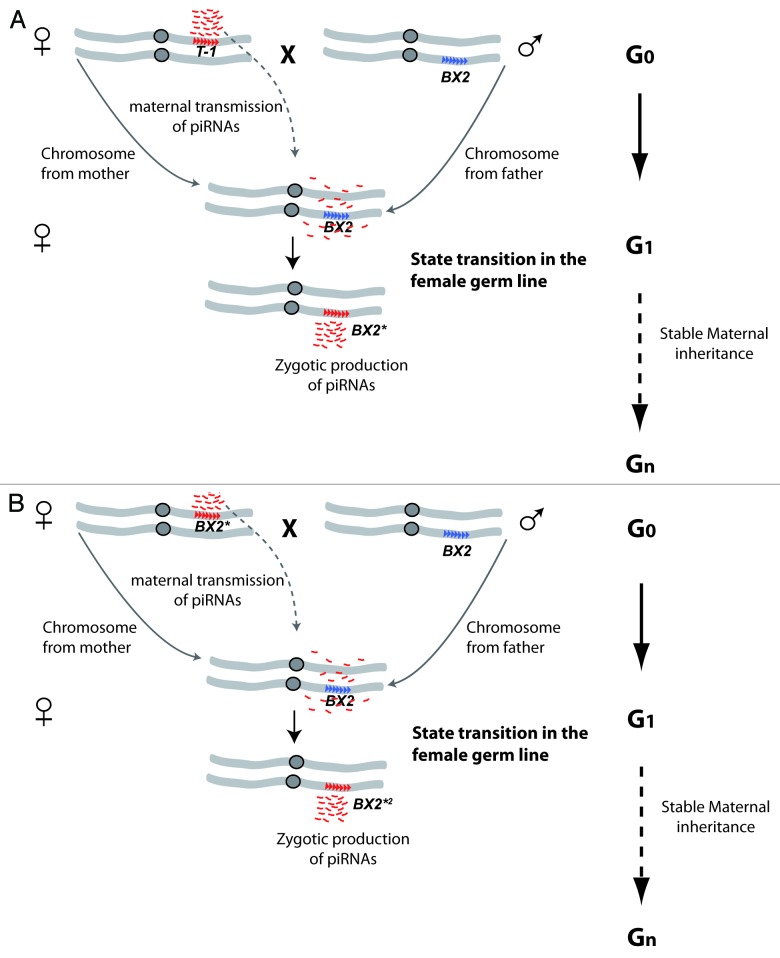Figure 1. Paramutation of the BX2 locus involves maternally inherited T-1 piRNAs. (A) Whereas the T-1 transgene cluster produces piRNAs (small red dashes), the BX2 transgene cluster does not; these distinct properties are completely stable over generations. When T-1 females are crossed to BX2 males (G0), the female progeny (G1) that inherited the BX2 chromosome from fathers and T-1-derived piRNAs from the mother (but not the T-1 chromosome) start to zygotically produce high levels of BX2-derived piRNAs. The inactive (blue) to active (red) state transition of the BX2 locus is noted with an asterisk (BX2*). This so-called paramutation can be further maternally inherited in the next generations (Gn). (B) Similarly as in (A), maternal inheritance of BX2*-derived piRNAs triggers the state transition of an inactive BX2 loci in G1, associated to zygotic production of piRNAs. This second-order paramutation is noted as BX2*2 and can be further maternally inherited in the next generations (Gn). The seven repeats of the P{lacW} transgene in the T-1 and BX2 loci are represented by blue or red arrowheads, depending on the states of the loci (active in red, inactive in blue).

An official website of the United States government
Here's how you know
Official websites use .gov
A
.gov website belongs to an official
government organization in the United States.
Secure .gov websites use HTTPS
A lock (
) or https:// means you've safely
connected to the .gov website. Share sensitive
information only on official, secure websites.
